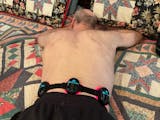How do you relieve neck pain?
Neck pain is a pervasive issue affecting countless individuals, impacting daily life and productivity. This passage delves into home remedies for neck pain, offering practical solutions for relief. Explore the importance of addressing neck pain at home with simple yet effective strategies.
Neck pain, characterized by discomfort or soreness in the neck region, stems from various causes such as muscle strain, poor posture, and stress. Understanding these factors is crucial in devising home-based relief methods.
Common Causes of Neck Pain
Delve into the intricacies of primary causes, backed by statistical insights. From muscle strain to stress-induced tension, grasp the factors contributing to neck pain and their prevalence in today's lifestyles.
7 Ways to Relieve Neck Pain at Home
Stretching Exercises
Neck pain often results from muscle tension. Incorporate simple stretching exercises to alleviate this tension.
Neck Tilt
-Sit or stand with a straight spine.
-Slowly tilt your head to one side, bringing your ear towards your shoulder.
-Hold the stretch for 15-30 seconds.
-Repeat on the other side.
-Perform this stretch 2-3 times on each side.
Neck Rotation
-Keep your spine straight.
-Turn your head to one side, looking over your shoulder.
-Hold the stretch for 15-30 seconds.
-Repeat on the other side.
-Perform this stretch 2-3 times on each side.
Neck Flexion and Extension
-Sit or stand with your spine straight.
-Slowly lower your chin towards your chest, feeling a stretch in -the back of your neck.
-Hold for 15-30 seconds.
-Gently tilt your head back, looking towards the ceiling.
-Hold for 15-30 seconds.
-Repeat these movements 2-3 times.
Hold each stretch for 15-30 seconds, repeating several times a day. These exercises enhance flexibility and promote blood circulation, easing muscle strain.
Ergonomic Adjustments
Evaluate your workspace and daily activities for ergonomic improvements.
Optimal Screen Position: Position your computer monitor or screen at eye level. Ensure that the top of the screen is at or slightly below your eye level to prevent looking down.
Chair and Desk Height: Adjust the height of your chair and desk to maintain a 90-degree angle at your elbows and knees. Your feet should rest flat on the floor, with your knees at hip level.
Supportive Seating: Invest in a chair with good lumbar support to maintain the natural curve of your spine. Use a cushion or rolled-up towel to support the lower back if needed.Additionally, maintain good posture by sitting up straight and avoiding prolonged periods of looking down at devices.
Heat and Cold Therapy
Apply heat or cold to the affected area based on the nature of your neck pain. For muscle tension, use a warm compress or take a warm shower to relax the muscles.
If you experience inflammation, apply a cold pack wrapped in a thin cloth for 15-20 minutes. This can help reduce swelling and numb pain.
Massage Techniques
Self-massage can be highly effective in relieving neck pain. Gently knead the muscles at the base of your skull with your fingertips. Use circular motions and gradually increase pressure. You can also massage your shoulders and upper back.
Consider using essential oils for added relaxation. Regular self-massage promotes blood flow and reduces muscle stiffness.

Over-the-Counter Medications
Non-prescription medications can provide temporary relief. Consider over-the-counter pain relievers such as ibuprofen or acetaminophen. Follow the recommended dosage and guidelines.
These medications help reduce pain and inflammation, offering short-term relief. However, consult a healthcare professional before prolonged use.
Sleep Positioning
Adjust your sleeping position to support your neck. Use a supportive pillow that maintains the natural curve of your neck. Avoid sleeping on your stomach, as this can strain the neck.
Opt for sleeping on your back or side with a pillow that aligns with the curve of your spine. Proper sleep positioning is crucial for preventing and managing neck pain.
Red Light Therapy
Understanding Red Light Therapy: RLT utilizes specific wavelengths of red and near-infrared light to penetrate the skin and stimulate cellular activity.
Choosing the Right Device: Select a red light therapy device designed for home use. Ensure the device emits wavelengths within the therapeutic range, typically around 660 to 850 nanometers.
Session Duration and Frequency: Start with short sessions, around 5-10 minutes, and gradually increase if tolerated. Perform sessions 2-3 times per week initially, adjusting based on your response.
Proper Application: Hold the device about 6-12 inches away from the skin for optimal penetration. Direct the light to the affected area, moving it in slow, circular motions.
Conclusion
Consistency is Key: Red light therapy often requires consistent and regular use to experience benefits. Incorporate it into your routine, such as after stretching exercises or before bedtime.
Incorporate these home-based strategies into your routine based on the nature of your neck pain. Combine multiple approaches for a holistic relief plan. If your neck pain persists or worsens, consult with a healthcare professional for a thorough assessment and personalized recommendations.
















Share:
Shoulder pain | Causes and treatments
7 Ways to Relieve Shoulder Blade Pain at Home